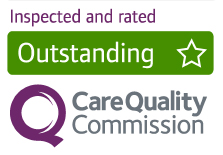Downloaded from www.mymenopausecentre.com
Direct URL: https://www.mymenopausecentre.com/hormone-replacement-therapy/monitoring-hormone-replacement-therapy/understanding-menopause-what-is-hrt-monitoring-and-why-its-essential/
Understanding Menopause: Essential Guide to HRT Monitoring
This article offers an in-depth look into the process and significance of hormone replacement therapy (HRT) monitoring for women undergoing menopause, highlighting why it's essential for optimal health management.
Explore
Book an appointment
The highly experienced doctors and nurses in our menopause clinic are here to help you. Appointments from £190.
Book An AppointmentWhat is HRT Monitoring?
Definition: HRT monitoring is a critical aspect of managing hormone replacement therapy effectively. It encompasses regular evaluations aimed at verifying the efficacy of the treatment, making adjustments to the dosages when required, and reducing the likelihood of adverse reactions. This monitoring process is comprehensive, involving a series of health assessments to ensure the therapy is suitably tailored to meet the specific requirements of the individual. Key elements of HRT monitoring include checking blood pressure levels and talking about any ongoing symptoms and side effects of HRT. These checks are essential to align the hormone therapy closely with the patient’s health status and lifestyle, thereby optimising therapeutic outcomes and enhancing overall wellbeing.
Why is HRT Monitoring Essential?
Effective management of menopause symptoms is paramount not only for maintaining comfort but also for averting potential long-term health complications that can arise from hormonal imbalances. Hormone Replacement Therapy (HRT) monitoring is a critical aspect of this management. Engaging in regular reviews with healthcare professionals allows for:
- Adjustments of dosages to ensure they are at the most effective levels, thus preventing the risks associated with both under or over-treatment.
- Early detection and mitigation of any adverse side effects, which can improve the overall efficacy of the treatment and the individual’s quality of life.
- Continuous assessment of the body’s response to HRT, enabling timely modifications to the treatment plan as required.
Such vigilant oversight aids in maximising the benefits of HRT while minimising potential risks, making it an indispensable component of menopause management.
Risks Associated with HRT
While HRT can significantly improve quality of life during menopause, it’s not without risks. These include an increased risk of blood clots, stroke, and certain types of cancer. Here’s how monitoring can help manage these risks:
- Regular screening for cardiovascular health and thrombotic disorders.
- Personalised therapy plans to use the lowest effective dose for the shortest duration – or to discuss year on year whether to continue to take HRT.
- Annual reviews to decide the necessity of continuing HRT.
Types of HRT Treatments
Hormone Replacement Therapy (HRT) is available in a variety of forms, each tailored to meet the specific health needs, symptoms, and personal preferences of the individual. Understanding the different options can help in making an informed decision about which method might be most appropriate:
- Tablets: These are the most commonly prescribed form of HRT. They are convenient and simple to use, making them a popular choice for many women managing the symptoms of menopause.
- Transdermal patches: These patches are applied directly to the skin. They are particularly beneficial for women who are unable to take oestrogen orally due to certain medical conditions or because of adverse reactions to oral medications.
- Gels: HRT gels are another transdermal option that are applied to the skin. They offer flexibility in dosing, which can be adjusted according to individual needs and responses to the therapy.
- Spray: Estrogen containing spray is also applied directly to the skin.
- Implants: These provide a long-term solution to hormone replacement. Implanted under the skin, they release hormones steadily over a prolonged period, reducing the need for daily administration and simplifying the management of menopausal symptoms. Unfortunately, implants are not currently widely available through the NHS at present.
Each of these methods has its own set of advantages, and the choice of treatment should be made based on a thorough consultation with a healthcare provider specialising in menopausal health.
Monitoring Schedule for HRT
Implementing a well-structured monitoring schedule is important for anyone embarking on hormone replacement therapy (HRT). A meticulously planned monitoring regime not only maximises the therapeutic benefits of HRT but also plays a pivotal role in minimising any potential risks associated with the treatment as well as screening for cardiovascular disease. Effective monitoring is key to ensuring that the therapy is personalised to meet the unique health requirements of each individual.
- The process starts with an initial consultation and a comprehensive baseline health assessment before beginning HRT. This is vital to establish a clear understanding of the individual’s current health status and to tailor the HRT effectively.
- Following the commencement of therapy, follow-up visits are scheduled at three months and then annually. If adjustments are needed, visits are more frequent. These visits allow healthcare providers to monitor progress and make any necessary adjustments to the treatment plan.
- Subsequent to the first year, if the patient’s condition has stabilised, annual check-ups are recommended. These yearly assessments help in maintaining the effectiveness of the therapy and in early identification of any potential health issues.
For further details and guidelines, please refer to the NHS guidelines on Hormone Replacement Therapy (HRT), 2021.
Conclusion: Taking Charge of Your Health
In conclusion, whilst HRT offers a potent solution to manage menopause symptoms, its administration must be carefully managed through regular monitoring. By staying informed and actively participating in your treatment plan, you can harness the benefits of HRT while mitigating its risks. Remember, the best approach is to consult with your doctor about the suitability and management of HRT based on your individual health needs.
This article was created using several editorial tools, including AI, as part of the process. Human editors reviewed this content before publication.
Book an appointment
The highly experienced doctors and nurses in our menopause clinic are here to help you. Appointments from £190.
Book An AppointmentLearn more
Join the pause. community
We’ve created pause. as a space for women to come together and share stories about their menopause experience, ask questions, and to find support and inspiration. We'll also share the latest news and updates on the menopause from our experts.
Want to be the first to hear our latest news? Join our pause. community today.
Share your email to receive the latest news, updates and information on new products and treatments from My Menopause Centre and our pause. community. You can unsubscribe at any time.
We're committed to protecting and respecting your privacy - see our Privacy Policy and Terms and Conditions

Book a consultation
Whether you want to discuss your symptoms, create a treatment plan that's right for you, understand some test results or have a check-up, the highly experienced doctors and nurses in our menopause clinic are here to help you.
Book nowContact My Menopause Centre
- General enquiries: hello@mymenopausecentre.com
- Book appointments online: Log into your account and go to 'My appointments'
- Book appointments by phone: 0333 444 1067
- Website: https://www.mymenopausecentre.com


















